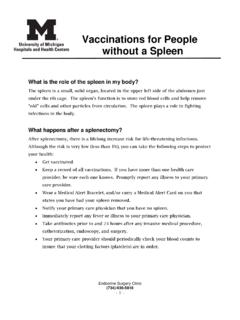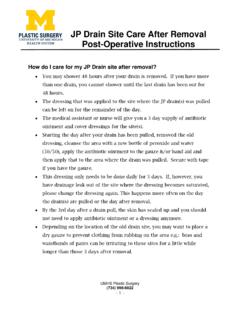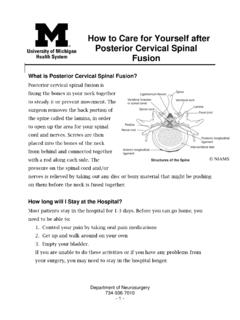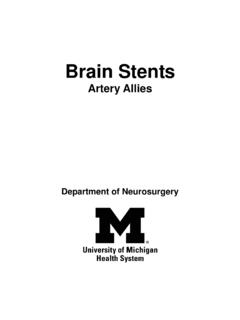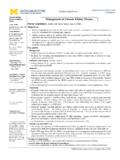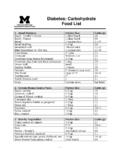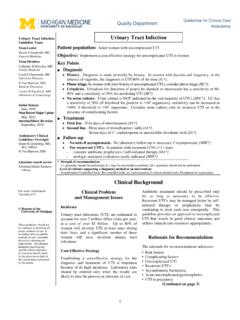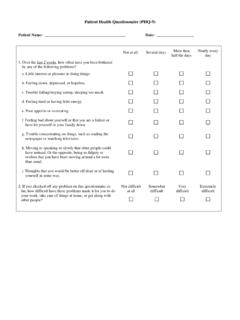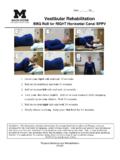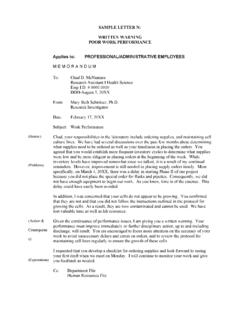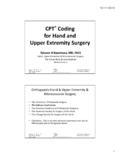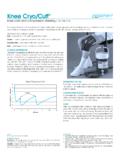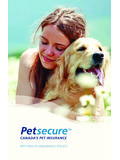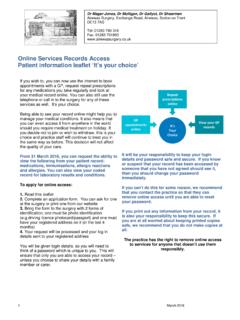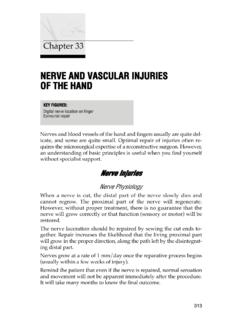Transcription of Peg Tube Guidelines Post-Operative Instructions
1 UMHS Oral & Maxillofacial surgery (734) 936-5950 - 1 - Peg Tube Guidelines Post-Operative Instructions What is a peg tube? A percutaneous Endoscopic Gastrostomy (PEG) tube is a soft tube which is inserted through the skin into your stomach. The tube allows delivery of food and medications to your gastrointestinal system. The PEG tube is positioned with the aid of an endoscope, a lighted flexible tube, which is inserted through your mouth. A nurse will spray the back of your throat with a local anesthetic. This will stop your gag reflex for about two hours. An IV will be placed in your arm and medication will be given for comfort and relaxation. The procedure takes about 15-30 minutes.
2 You should, however plan on at least 1-2 hours, as you will be taken to a recovery room until you are fully awake. What preparation is needed before surgery ? Do not eat food or drunk fluids after midnight. Remember: No breakfast. You may have water only up to 4 hours prior to your appointment. Meds: Take your medications as usual the morning of your procedure. You will need special Instructions from your doctor or nurse if you have diabetes, or if you are taking Coumadin, aspirin, or ibuprofen (Motrin or Advil) or other known blood thinners. You must bring someone to drive you home. Driving is not permitted for at least 24 hours after the procedure. UMHS Oral & Maxillofacial surgery Peg Tube Guidelines - 2 - What Supplies will I need for home?
3 60 cc catheter tip syringe Package of unsterile 4x4 gauze Stretch netting or tube attachment device (such as Hollister #9780) Antibacterial soap Hydrogen Peroxide Cotton tip applicators 30 cc luerlock syringe What prescriptions will I need? 2 tablets Viokase (1/4 tsp. each) 2 tablets 324 mg sodium Bicarbonate (5 grains each) What are my care Instructions ? New Tube Care: Begin with water on evening of tube placement and begin regular tube feeding after 24 hours, as instructed. You may shower 24 hours after tube placement. To remove drainage, crusts, or blood from the skin around the tube, use a solution of half hydrogen peroxide- half water. Swab once a day and as needed, followed by antibacterial soap (unless sensitive) and water.
4 Cleanse in a spiral pattern, beginning at the tube and moving outward. Rinse and pat dry. Some drainage around the site is normal. It is important to keep your skin around the tube clean and dry. Remove dressing 24 hours after surgery . Your tube should be marked with permanent ink at the place where it is level with your skin. Contact your physician immediately or go to the emergency room if your tube falls out within the first 2 weeks after placement. UMHS Oral & Maxillofacial surgery Peg Tube Guidelines - 3 - Daily Care: Inspect skin for redness, tenderness, swelling, drainage or gastric leakage. Inspect tube for inward or outward movement. The ink mark should be at skin level.
5 Cleanse skin with antibacterial soap and water. Dry thoroughly. Gentle manipulations of tube are not harmful, but take care not to push or pull tube out of position. If tube has a disk or crossbar, clean underneath with cotton tip applicator. Use half- strength hydrogen peroxide to remove crusts, if present. Rinse with water. Repeat up to 2-3 times per day as needed. Avoid a dressing in most cases: dressings may promote skin breakdown and infection. If a dressing is used, change immediately if it becomes wet. Secure the tube underneath clothing or with stretch netting" to prevent movement. Excess tension can cause damage to the stomach lining or enlarge the opening in the stomach.
6 Make sure the tube does not lay flat against the skin all the time. T- bar or cross-piece should rest gently against the skin without dimpling it when you are in a position of comfort. If it leaves an impression on the skin, it s too tight. There should be some room for cleaning under it and around the tube. If necessary, rotate bar to relieve pressure. If the bar seems to be too tight, you should contact your physician. It may become tight if you gain weight. Rotate cross- piece of a turn daily to avoid skin breakdown. Perform this after cleaning the area. Tube Feeding: Sit upright or at least 45 degree angle during feeding and for 1 hour following the end of the feeding.
7 UMHS Oral & Maxillofacial surgery Peg Tube Guidelines - 4 - Flush tube with 60 cc warm water before and after each feeding to keep the inner surface of the tube clear (food can build up and block the tube). After flushing, clamp tube closed between feedings to prevent leakage. Medications: Do not mix medications with feeding formula. Medications should be given in liquid form if possible. If only pills are available, crush finely. Mix the powder in water until there are no clumps. Give each medication separately. Flush tube with 10 cc of warm water between medications. Flush tube with 60 cc warm water before giving any medications and again before tube is clamped off.
8 What follow-up care will I receive? You should have a follow- up appointment within 2-3 weeks after tube placement. Please call your physician if you do not have an appointment. When should I call my doctor? Signs and Symptoms for infection o Chills or temperature over o Redness, swelling, increased pain, or foul smelling drainage around the tube. Contact your physician immediately or go to the emergency room if tube falls out within the first 2 weeks after placement. The tube must be replaced within 2 to 3 hours or the opening leading to your stomach may close. Bring your tube with you. Cover skin opening with a dry gauze or cloth. If tube falls out over 2 weeks after placement: it should be replaced within 12 hours.
9 UMHS Oral & Maxillofacial surgery Peg Tube Guidelines - 5 - Abdominal bloating, nausea, cramps, vomiting or diarrhea. Unable to do feedings. Increasing size of the hole into your stomach. The crosspiece is making a sore at the skin. Change in overall health: significant weight change, weakness, less urine. Any new, unexplained symptoms. If you are unable to solve any problems using the Problem Solving Guide. Problem Solving Guide Bloating, fullness, nausea, or vomiting Symptoms Action Too rapid feeding rate Slow feeding rate Gas from high fiber formula Contact dietician for formula change Tube out of position Measure length of tube or look for mark. Notify physician if it has been removed.
10 Blockage in the bowels Check amount of gastric residual*. Re install and flush tube with 30 cc warm water. If residual is 60 cc (do not withdraw more), delay feeding for 1-2 hours and check again. Contact physician if unable to do feedings. Poor stomach emptying If this problem continues, your physician may prescribe a medication to help move formula through your digestive tract. Gastric residual is formula left in your stomach from a previous feeding (stomach contents that haven t passed through). To check: withdraw stomach contents with a 60 cc syringe before scheduled feeding. Do not take out more than 60 cc. Inject contents back into the tube and flush.
